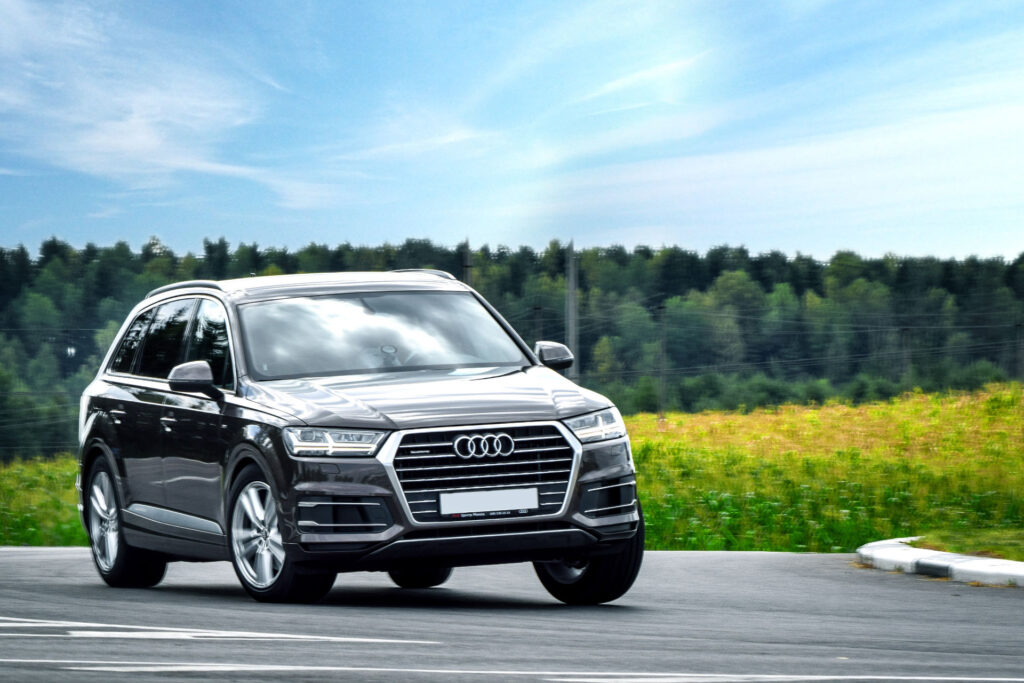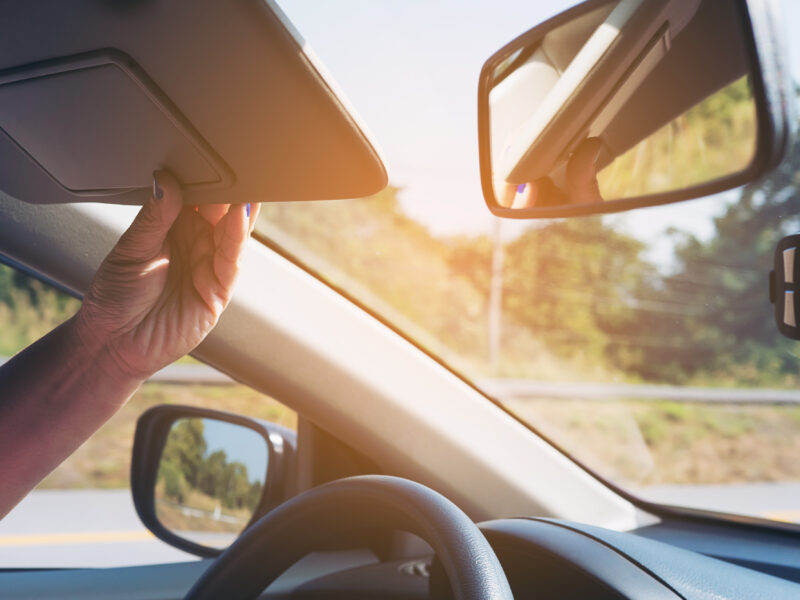Audi Drive Select is a feature that is offered on most Audi models, with some having it as standard and others having Drive Select as an add-on option. And for Audis equipped with the Multi Media Interface (MMI) there is also the Individual mode which enables the driver to fully customise the various inputs available (within certain parameters of course). Let’s have a look at the Audi Q5 Drive modes, which also come in most other Audis, and look at their features in detail.
Purpose of Audi Drive Select
Audi has ingeniously expanded its target market by offering a car with versatile performance and handling capabilities through the implementation of Audi Drive Select and its various drive modes. This cutting-edge Audi technology caters to the diverse preferences and driving styles of a wide range of car buyers, effectively extending their product range.
Gone are the days of traditional “sport buttons” found in the center consoles and transmission levers of older car models from the 80s and 90s. Audi Drive Select represents a significant leap forward in modern technology. Unlike its primitive predecessors, this innovative system provides a multitude of customisable drive modes, allowing drivers to finely tune the car’s performance characteristics to their liking.
With Audi Drive Select, drivers can adjust throttle response, transmission shifts, steering sensitivity, suspension settings, and more. This level of customisation ensures a truly personalised driving experience, enhancing overall enjoyment on the road. Whether you prefer a dynamic and sporty ride or a more comfortable and relaxed journey, Audi Drive Select and its array of drive modes have you covered, making every drive a good experience.
Audi Drive Select Modes
Audi Drive Select continuously monitors real time data from sensors and adjusts instantaneously to cater for any of the following modes the driver has selected:
- Efficiency
- Comfort
- Auto
- Dynamic
- Individual
While the terms may seem self-explanatory, delving into the specifics of Audi Drive Select provides a clearer understanding of the distinctive traits associated with each setting.
It’s worth noting that the Individual mode may have slight variations depending on the specific model, taking into account optional features like dynamic steering and air suspension with damper control. Regardless, all settings within Audi Drive Select consist of three submenus: Comfort, Auto, and Dynamic.
Below is a list of the components with customisable settings available in the Audi Q5 Drive Select menu, followed by a description of the various modes:
- Active Sport Differential
- Suspension
- Adaptive Cruise Control
- Dynamic Steering
- Engine/Transmission
Understanding what Audi Drive Select actually does helps paint a clearer picture of the characteristics each of these settings has.
Audi Drive Select Modes Explained
| Mode | Summary |
| Efficiency | Lowers fuel consumption by delaying and reducing fuel intake when accelerating and activating energy efficient systems such as economy mode A/C, S-tronic transmission and ACC (Adaptive Cruise Control). |
| Comfort | Creates the most smooth and pleasant driving experience by a responsive accelerator and transmission, increased steering ratio and higher response speed in suspension system. |
| Auto | Constantly monitors road conditions, vehicle speed and driver behaviour, and makes subtle changes to steering, suspension and drivetrain, generally keeping the vehicle somewhere between comfort and dynamic mode. |
| Dynamic | Facilitates a more involved and engaging driving experience (sports mode). Engine, transmission, steering and suspension all contribute to this. |
| Individual | Gives the driver the chance to hand pick the various options in Active Sport Differential, Suspension, Adaptive Cruise Control, Dynamic Steering, Engine/Transmission. |
Audi Efficiency Mode
According to Audi, Efficiency mode is described as the mode that optimises vehicle efficiency and actively assists the driver in adopting a driving style that reduces fuel consumption. In simpler terms, it means there is a slight delay when pressing the accelerator and the engine may feel less responsive. By reducing the sensitivity of the throttle, it discourages aggressive acceleration and encourages drivers to adopt a smoother and more gradual approach when pressing the accelerator. This, in turn, reduces fuel consumption during acceleration and allows for more efficient power delivery.
In Efficiency mode, Audi has made significant efforts to reduce energy consumption on multiple levels. Activating Efficiency mode triggers various systems, such as the air conditioning switching to economy mode. Additionally, the S-tronic transmission and Adaptive Cruise Control (ACC) work in harmony to promote a more efficient driving style.
Audi Comfort Mode
In Comfort mode the accelerator and transmission are more responsive than in Efficiency Mode, but still smooth, creating the most pleasant driving experience possible. For models equipped with dynamic steering, it will be easier due to the increased steering ratio. For Audi vehicles equipped with air suspension, this is where the vehicle truly excels, particularly in adverse conditions. The ride is noticeably lighter, and far more forgiving over bumps and potholes due to the speed at which the suspension system responds and compensates for irregularities in road surfaces. The sport differential in comfort mode priorities vehicle stability, giving that extra security when cornering.
Audi Auto Mode
Auto mode is an interesting one as it’s not actually a fixed setting. It’s rather a mode that is constantly changing while the vehicle is in motion. This involves making subtle changes to both steering, suspension and drivetrain, generally keeping the vehicle somewhere between comfort and dynamic mode. Auto mode considers road conditions, vehicle speed, and driver behaviour to give the most ‘normal’ setting. It’s worth noting that when the driver shifts the transmission to ‘S’ or sports, whilst the car otherwise is in Auto mode, the engine and transmission dynamic modes will be activated.
Audi Dynamic Mode
The Audi Dynamic Mode represents a significant advancement from the traditional sports button. Unlike its predecessor, Dynamic Mode transforms every aspect of the car into a sports mode, elevating the driving experience to new heights. The engine, transmission, steering, and suspension work in unison to deliver a more immersive and engaging driving experience.
In Dynamic Mode, the car’s performance is optimised, providing better acceleration, sharper gear shifts, and more responsive handling. The steering becomes more precise, allowing for greater control and feedback. Additionally, the suspension system is dynamically adjusted to offer improved agility and stability, ensuring a thrilling and connected ride.
Notably, the sports differential takes the excitement even further. By actively distributing torque to the rear wheels based on the driver’s inputs, it enhances the vehicle’s agility and responsiveness, further amplifying the overall driving experience.

Audi Individual Mode
Individual Mode provides drivers with the opportunity to tailor the car’s settings in each category for a personalised driving experience.
One advantage of Audi’s Individual Mode is the ability to customise settings based on specific road conditions or driving scenarios. For instance, a driver may choose to set the engine and transmission to Dynamic mode for increased performance, while opting for Comfort mode for the suspension to counteract rough road surfaces. Alternatively, when navigating winding roads, the driver may prefer to have the suspension set to Dynamic mode for enhanced agility, while keeping the engine and transmission in Comfort mode to maintain a smooth and relaxed driving experience.
Certain SUV models may feature additional individual settings such as Lift/Offroad and Allroad modes. These specialised settings prove beneficial when traversing challenging terrains or encountering diverse weather conditions:
- Lift/off road: +45mm
- All road: +25mm
- Efficiency/Comfort: Normal ride height
- Auto / Dynamic: -15mm
Audi Drive Select Components
Now that the various Audi Drive Select modes have been covered, a closer look can be taken at the mechanical components involved, and not least, some of the benefits that are achieved as a result of their ability to make millisecond changes whilst the vehicle is in motion.
Active Sport Differential – Going Around Corners in an Audi
This ground breaking piece of technology went from concept to reality back in 2008, thanks to the talented group of engineers at Audi. For decades, Audi has been renowned for its Quattro four wheel drive system, which has the ability to shift torque distribution between the front and rear wheels. The innovative Quattro design was enhanced even further by the introduction of the Active Sport Differential which debuted in the legendary Audi S4 sedan. The sports differential adds a whole new element of performance by enabling torque to be split between the rear wheels. This has a profound effect on both performance and safety, especially when cornering.
Let’s address the safety side of things, as it might be questionable why allowing a car to corner quicker makes the car safer. ESP (Electronic Stability Program) is pretty common across the board now, with around 80% of new car manufacturers providing some sort of it, albeit under different names. ESP is purely reactive technology as opposed to proactive, meaning it responds to loss of traction, rather than application of power. Although these two elements may only be split seconds apart, it makes a world of difference in safety. Where ESP is able to detect lost grip and apply braking force to individual wheels, Audi’s sport differential is able to pre-empt this loss in traction and distribute torque accordingly. This is made possible through signals received from the suspension system, which continually monitors things like vehicle angle, and proportion of load on the wheels.
Performance gains are considerable, to put it mildly. When the driver accelerates through a tight bend, the outside rear wheel will receive the maximum torque required which keeps the vehicle balanced and enables the front wheels to accurately maintain their steering line. This literally propels the car through and out of the corner, effectively reducing understeer to zero.
Where ESP applies braking force to individual wheels, Audi’s sport differential is able to pre-empt this loss in traction and distribute torque accordingly.
Audi’s Advanced Suspension – Better Cornering
For Audi models fitted with air suspension and electronic damper control, ride quality is first class. Aside from the fact that air suspension enables ride height and firmness variability, electronic damper control teleports driver comfort levels to another realm.
One disadvantage of the conventional coil spring suspension set up, is that the compression and rebound movement of the springs are dependant on each other. A spring compressed due to a bump in the road, will contain elastic potential energy and must at some point return to its original position.
Audi’s electronic damper control removes the element of spring forces constantly working against each other and permits each corner of the car to react far quicker by using electric motors to activate system hydraulics. More specifically, to quote the Audi Technology Portal, ‘electromagnetically actuated valves in the damper piston alter the through-flow cross-sectional area for the hydraulic fluid as necessary’.
Adaptive Cruise Control
Audi first introduced a form of adaptive cruise control (ACC) in the 2002 Audi R8 and by 2006 had introduced a full speed range version on the Q7. In Audi’s Drive Select, the changes it makes are probably most obvious in the Efficiency Mode. In this mode Adaptive Cruise Control works in conjunction with the vehicle navigation system to avoid unnecessary fuel consumption. A couple of ways it does this is to reduce speed earlier when it detects bends in the road or heavy traffic, as well as accelerating back up to set speed at a slower rate. The ACC will also increase the set speed tolerance margin on moderate uphill stretches to maximise fuel economy.
Is the Q5 Dynamic Steering Just a Marketing Ploy?
Like the other Drive Select modes, Dynamic Steering also has the Comfort, Auto and Dynamic choices. This isn’t just a gimmick – the steering ratio is able to be electronically altered by up to 100%! In real world driving, this equates to less effort required during low speed manoeuvring like parking and more control at freeway speeds. It does this through a more indirect steering ratio at higher speeds which greatly improves straight-line directional ability.
As with the Active Sports Differential, this high-tech steering system also has safety benefits in that it functions in conjunction with ESP (amongst other things) and takes corrective action in emergencies. It might seem unusual for something as vital as steering to rely on electronics, but Audi have all bases covered and in the unlikely event of system failure, the steering will respond like conventional steering. The electromechanical pinion is an addition to the driver’s steering input and will lock to ensure a mechanical link between the steering wheel and front axle is maintained, should a fault arise.
Audi Drive Modes Effect On Engine/Transmission
The engine and transmission differences the driver will notice most when experimenting with the different modes on Drive Select are throttle sensitivity and transmission shift points. Again, starting with Efficiency mode, performance will be dialled right back through a fairly delayed throttle response, as opposed to Dynamic, which has a far more sensitive right pedal. The S-tronic transmission is capable of shifting at low engine speeds even going as far as changing to neutral in milliseconds when coasting (in Efficiency mode). This reduces the rolling resistance from the various drivetrain components. In Dynamic or when put into S, it transforms into a different beast, with far firmer up and down changes, as well as holding the same gear for longer to maximise performance.
There is obviously a lot more that could be said about the different Audi Drive Select modes and the componentry involved, for example the individual parts and sensors that make up the steering and suspension, as well as other minor adjustments within Drive Select such as the seat belt tensioner and how it responds in the different modes. Safe to say, Audi Drive Select has been met with an overwhelmingly positive response since its inception – both from first time Audi drivers, right through to the brand’s loyal fan base of die-hard Audi enthusiasts.
Read the following article if you’re wondering whether a luxury car is actually worth it. If you’re not sure, you can always rent a luxury car for the day to test out the technology and features.
Information and advice in this article is general in nature and current at the time of publication, and no warranty is offered as to its accuracy or completeness.




